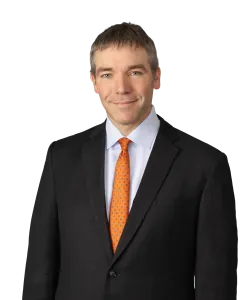Mere Puffery vs False Advertising: Recent Trends
Free-range hens, sustainably sourced, and 100% Parmesan Cheese: At first glance, these phrases are indistinguishable from the countless marketing consumers encounter on a daily basis. However, in courts across the country, these phrases could constitute false advertising. So, what makes these statements different?
When Does “Puffing” Go Too Far?
Puffery is often described as “exaggerated advertising, blustering, and boasting.” [1] “World’s best coffee” and “Number #1 Pizza” are common examples. Puffery’s subjective character means it cannot be proven true or false. Unlike exaggerations or overstatements, misleading descriptions of specific characteristics can constitute false advertising. When a statement is specific and measurable, it is unlikely to be considered mere puffery.
Although rules differ across jurisdictions, most courts focus on whether a reasonable consumer would interpret the statement as “a factual claim upon which [they] could rely.” [2] Courts also review statements in light of their context, including disclaimers or other clarifying language. Finally, the level of a statement’s specificity can transform a “puff piece” into an actionable claim.
The following cases illustrate how jurisdictions differ in applying these rules.
False Advertising Claims Across the Country
“Free-range” hens: Two cases brought in the Southern District of New York demonstrate how specific statements about a product’s qualities can rise to the level of false or deceptive advertising.
The defendant’s packaging described its eggs as coming from “free-range” hens and included slogans and images of hens frolicking outdoors. In reality, the plaintiff alleged, their hens had limited access to the outdoors and lived in crowded henhouses. Despite reaching the same result, each court’s approach differed. In Lugones, the court distinguished between certain statements that were non-actionable puffery and others that rose above mere puffery.[3] Specifically, the court found that “WE LOVE OUR HENS, YOU’LL LOVE OUR EGGS” and “BETTER LIVES FOR OUR HENS MEAN BETTER EGGS FOR YOU” lacked concrete representations and were too subjective to be proven true or false. However, defendant’s representations that “most hens don’t have it as good as Nellie’s” and that its hens could “peck, perch, and play on plenty of green grass” were factual claims, especially in light of the images on the packaging.
In Mogull, the court simply stated that “free-range” is an “affirmative claim about a product’s qualit[y]” since it signifies to consumers that hens have “extended access” to the outdoors.[4]
“Sustainably Sourced” salmon: A case out of the Northern District of Illinois involved Atlantic salmon products labeled as “sustainable.” [5] The plaintiff alleged that, despite this label, the salmon was sourced through environmentally destructive and unsustainable practices. The court held that the label in question rose above mere puffery because it suggested to consumers that there were “certain environmental benefits” behind its product.
“100% Grated Parmesan Cheese”: The Seventh Circuit recently joined the First, Second, and Ninth Circuits in holding that the ingredient list on the back of food products does not foreclose a deceptive advertising claim. For these circuits, the reasonable consumer standard does not expect consumers to parse through complicated ingredient labels searching for ambiguities. Bell involved cheese manufacturers who labeled and marketed their products as “containing 100% Grated Parmesan Cheese.” [6] The ingredients list, however, revealed that the product contained additional non-cheese ingredients. Plaintiffs argued the products were deceptive and likely to mislead consumers. The Seventh Circuit agreed and departed with the district court’s approach, holding that an ingredient list on the back or side of a product is no remedy for an ambiguous or misleading front label.
“World’s Hardest Floors”: Departing from the plaintiff-friendly approach discussed in the previous cases, the Southern District of California found no actionable claim in Klaehn, a case involving “the World’s Hardest Floors.” [7] A flooring manufacturer marketed its bamboo flooring as “twice the density of any other hardwood floor in the world,” with the “durability to last a lifetime.” Plaintiffs brought suit alleging material misrepresentations after they experienced issues with the quality of the flooring. The court found these representations to be classic examples of non-actionable puffery. Klaehn shows that some courts are still open to dismissing advertising claims as puffery in the pleadings stage. However, it is easy to see how the courts discussed above might view the claim that the floors are “twice the density of any other hardwood floor” as an actionable factual statement if it can be falsified.
Trends Across Jurisdictions
Overall, a plaintiff-friendly approach to these cases seems increasingly common across jurisdictions. Many courts hesitate to dismiss these claims at the pleading stage. While puffery remains a defense to claims for false advertising, at least for general representations of quality, specific representations are increasingly likely to give rise to causes of action. This is especially true if a representation is measurable and arguably false. Furthermore, although context matters, clarifying statements, such as ingredient lists, are not always a reliable cure for broader representations that tend to suggest different facts about a product.
In sum, the more specific the claim that is made, the more important it is for companies to have objective evidence that it is true.
